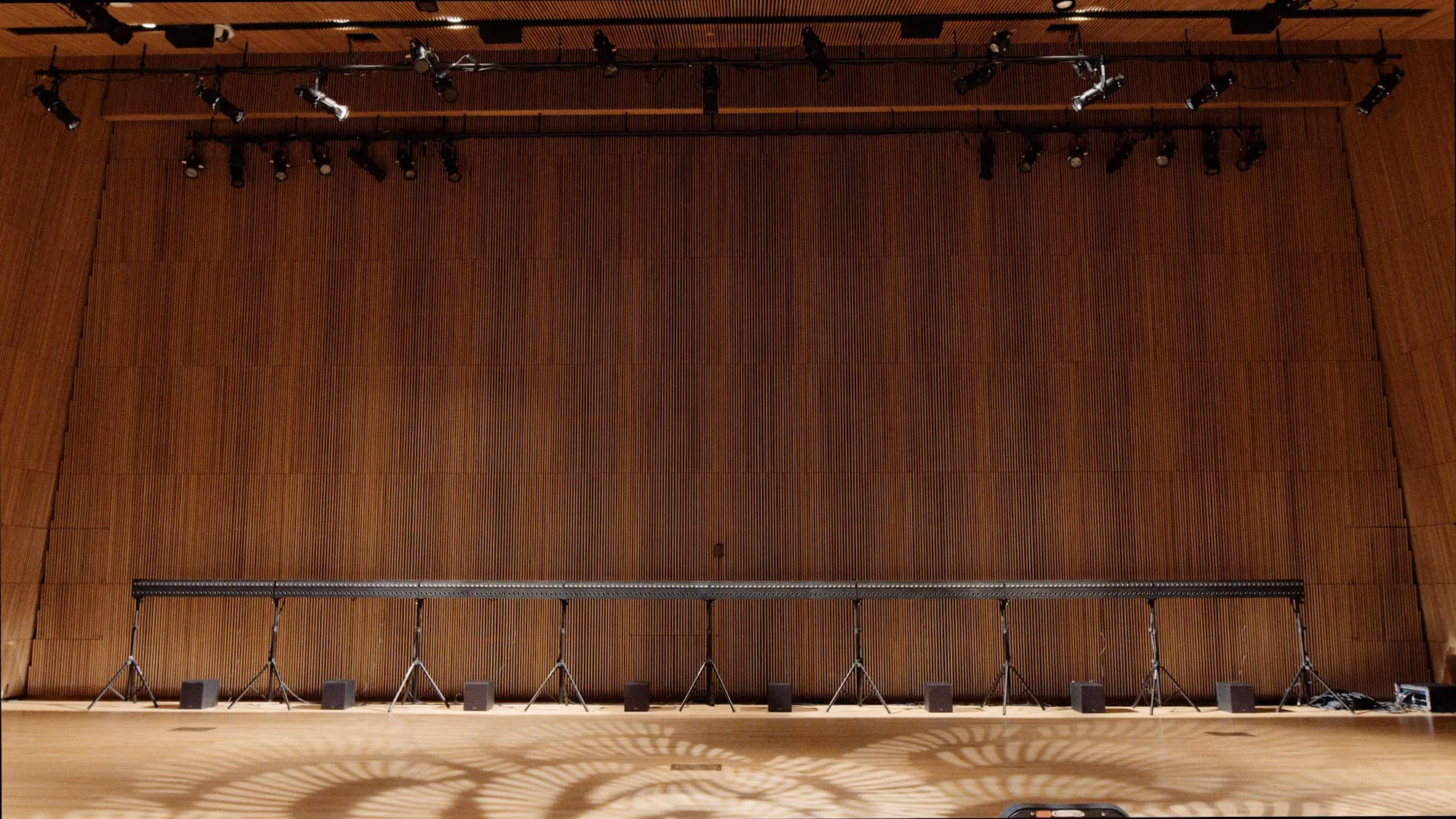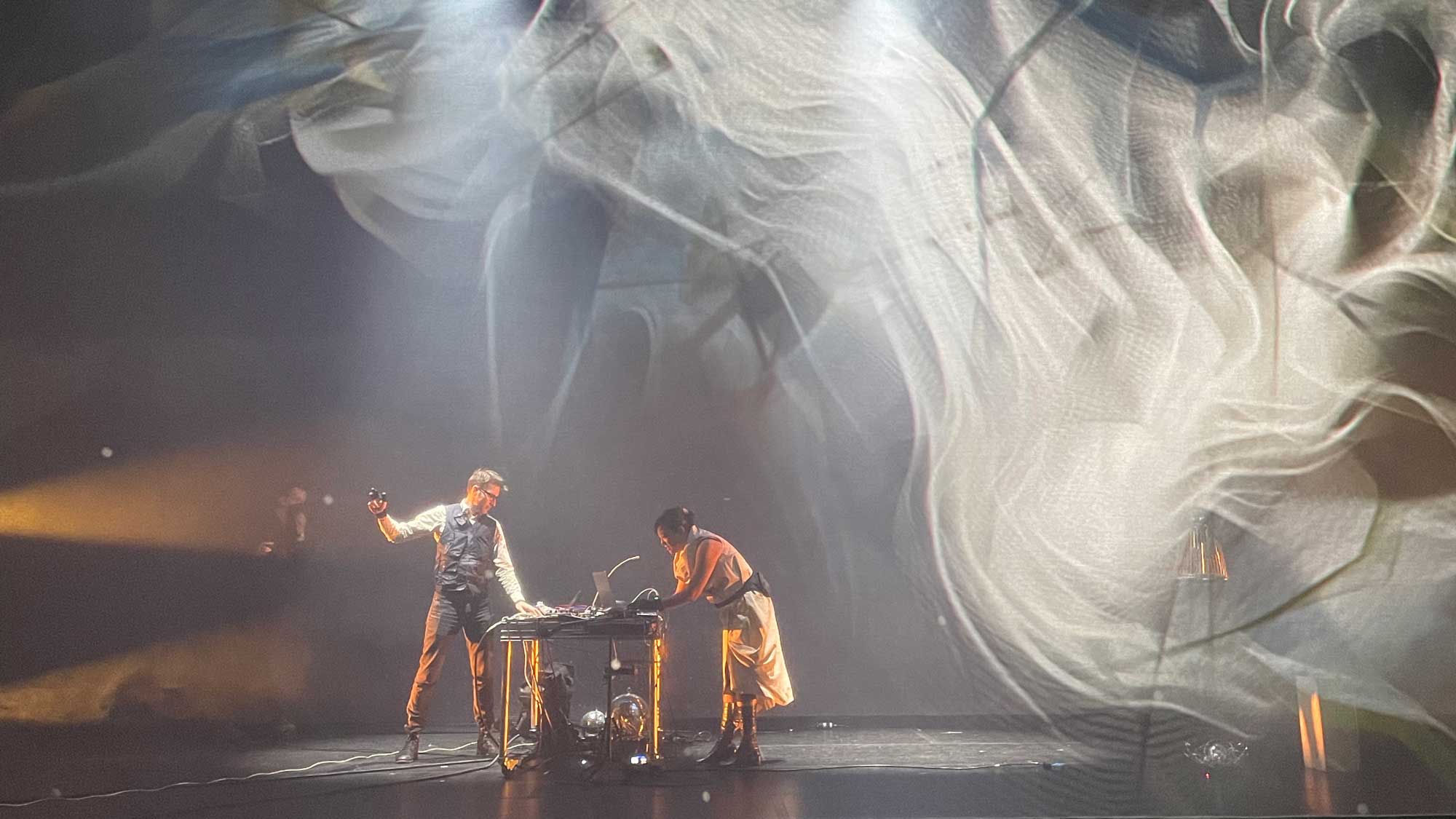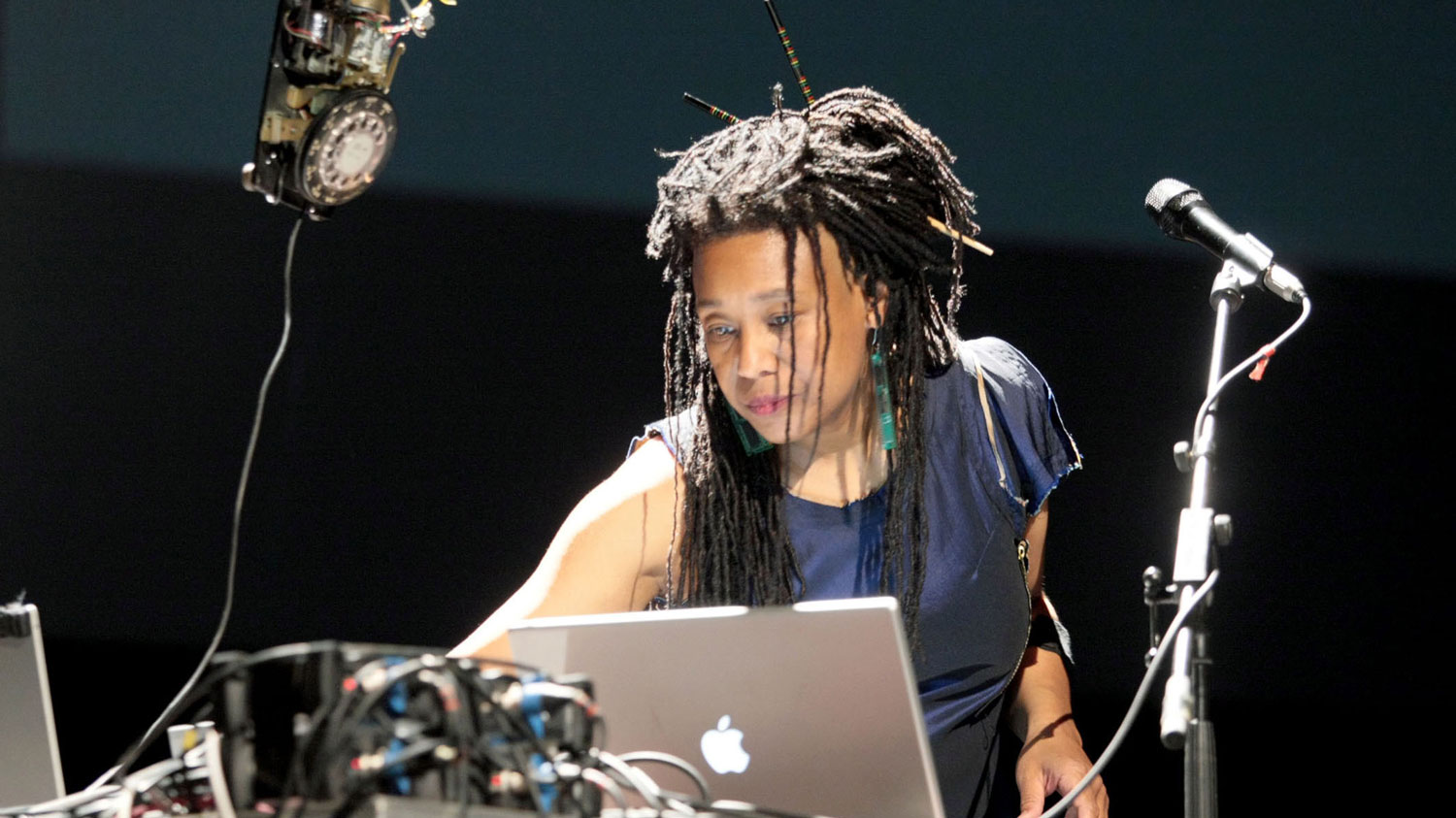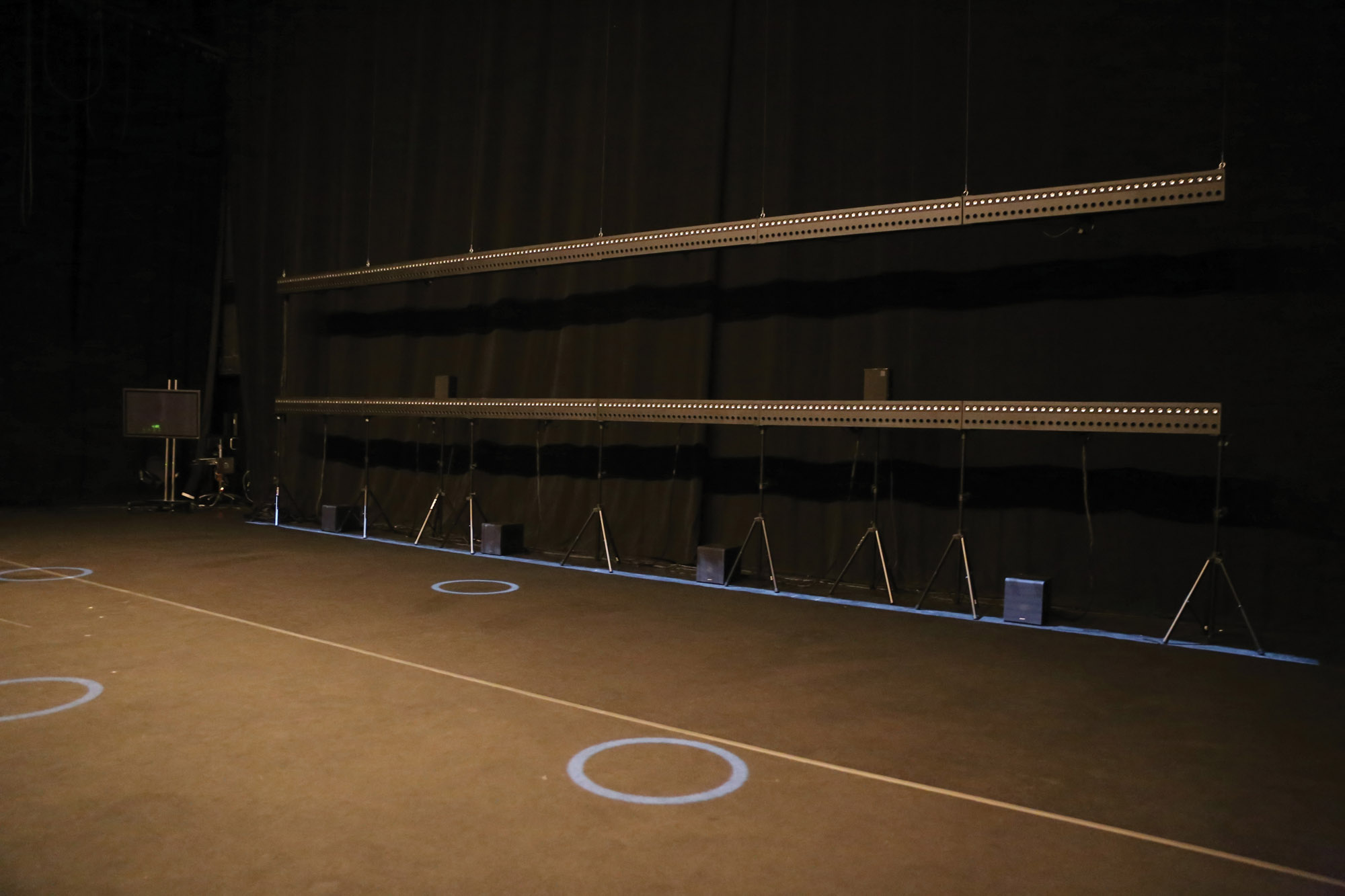
TIME:SPANS Festival 2021
From August 12–16, three EMPAC commissions made for Wave Field Synthesis (WFS) premiered at the 2021 TIME:SPANS Festival in NYC where EMPAC audio staff were on hand for engineering and technical support. The Wave Field Synthesis system allows the artists to place sounds in space in a unique way for both composers and listeners.
The following compositions premiered at the 2021 TIME:SPANS Festival:
Miya Masaoka
Seeking a Sense of Somethingness (Out of Nothingness), 2021
Commissioned by EMPAC
Bora Yoon
SPKR SPRKL, 2021
Commissioned by EMPAC
Nina C. Young
New Work, 2021
Commissioned by The Earle Brown Music Foundation Charitable Trust
Pamela Z
SONANT TOPOGRAPHY, 2021
Commissioned by EMPAC
Concert duration: 70 min
AUGUST 2021 ..... TIME:SPANS FESTIVAL, NYC
Main Image: Wave Field Synthesis Array at Time:Spans Festival, NYC August 2021.
TIME:SPANS Festival 2021 featuring Bora Yoon, Nina C. Young, Miya Masaoka, and Pamela Z
The EMPAC High-Resolution Modular Loudspeaker Array for Wave Field Synthesis
A long box with over 240 small loudspeakers is positioned along the wall. The box serves simultaneously as stage and as instrument for the pieces created for this event. The composers worked with this instrument exploring its potential for their music.
This instrument creates sounds quite differently of other loudspeaker systems. It has an unwieldy name: The EMPAC High-Resolution Modular Loudspeaker Array for Wave Field Synthesis.
Everyone has experienced the following situation: You are listening to music over a stereo system with a left and a right loudspeaker. There is an area where you hear the full panorama of the music, from left through the center to the right, as is there was a stage. When you move your chair to the very left or very right, most of the music comes from that speaker closest to you. The same in a lecture hall where a human speaker is amplified with left and right loudspeakers on both sides of the stage. If the podium with the speaker is to the left on the stage and you sit way to the right in the audience, you will hear her voice coming out of the right loudspeaker – and not from where she stands. Or you sit in a movie theater with surround sound on the furthest left seat of a row. The surround sound effects will come for you mostly from the left.
The listening experience is quite different when you are in a concert hall with a small ensemble playing acoustic instruments. Independent of where you sit, you hear the clarinet seated on the right, the singer in the center, and the oboe to the left — always from where they are onstage. You move around in the hall and the sound of the instruments always comes to you from where the players sit. And if a player sits towards the back of stage left, you hear them playing from back there.
Wave Field Synthesis is a specific technology that allows us to create such a sound stage. You hear the sounds coming from their specific location, where the composer or sound engineer placed them, independent of where you are in the room. The system creates a physically correct wave field for each sound. And if a sound moves from left to right, anyone in the auditorium will hear that movement. How the sounds are spatialized, are placed in space, and can be experienced independent of whether you are more to the right, in the center, or more to the left. Wave Field Synthesis creates this ‘natural’ way of localizing sound, allowing for a greater transparency of the sound stage. A composer can work with sound in space very precisely and can be assured that everyone can hear it as intended. Certainly, such a system does not make a piece of music better or worse.
The theory and technical implementation for Wave Field Synthesis was developed in the late 1980s. Quite a few loudspeaker systems have been developed to take advantage of this theory. The quality of such systems depends on the diameter of the loudspeakers. The smaller the speakers, the better and sharper the sound localization; the larger the diameter, the fuzzier and more out of focus the spatial perception for our human ears. We developed this system at EMPAC at Rensselaer Polytechnic Institute for highly flexible artistic use, which allows placement of modules anywhere in a space, also overhead or in a circle. For this event, we use a straight line of speakers. The system requires quite a bit of computing power to calculate the wave field of each sound – since the creation of each sound involves many, many loudspeakers at the same time. It is not one loudspeaker for one sound – but all are engaged for each individual sound.
Listening to the music does not require an understanding of the system.
Read more about Wave Field Synthesis.
—Johannes Goebel, Director
Dates + Tickets
Tickets will be available for purchase on August 1, 2021
Season
Co-Presented by TIME:SPANS and The Curtis R. Priem Experimental Media and Performing Arts Center (EMPAC) at Rensselaer Polytechnic Institute



